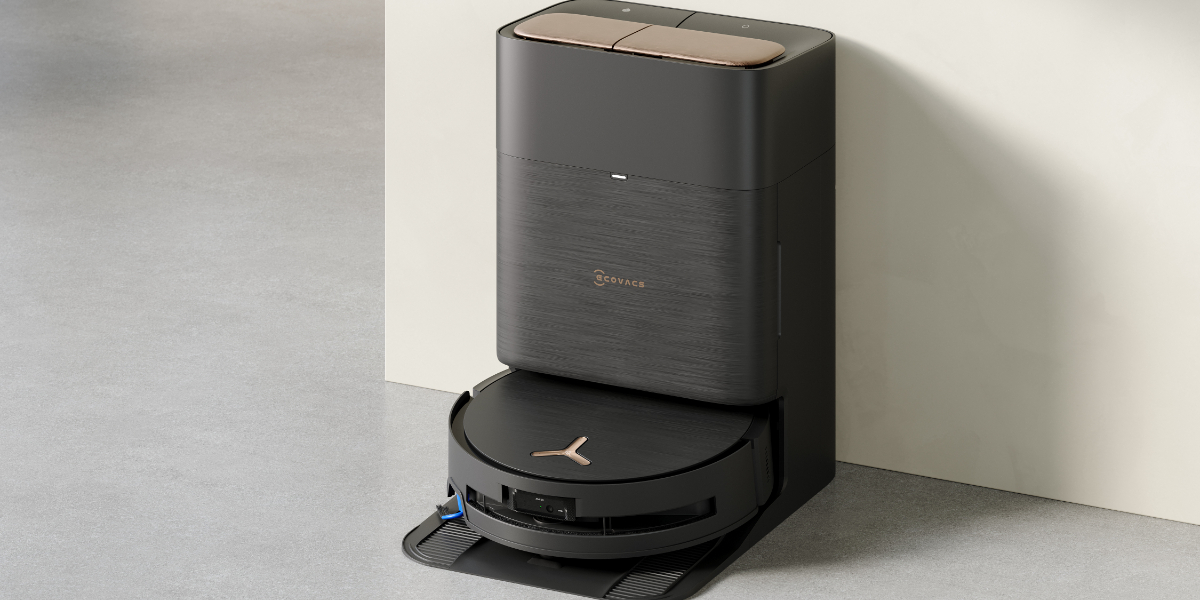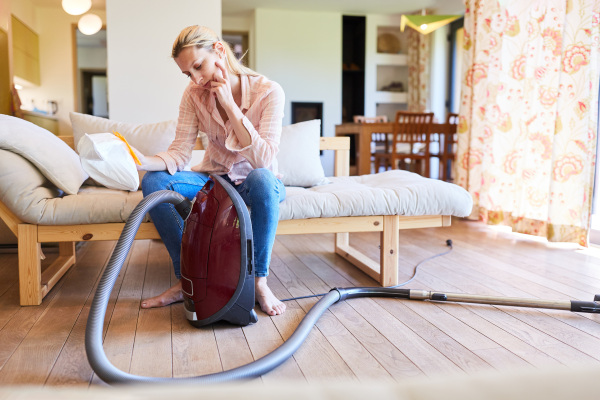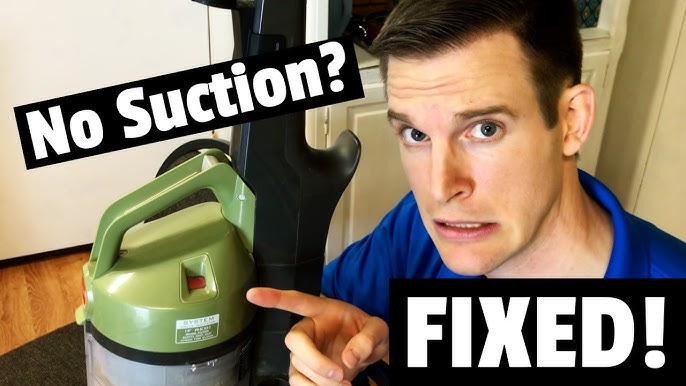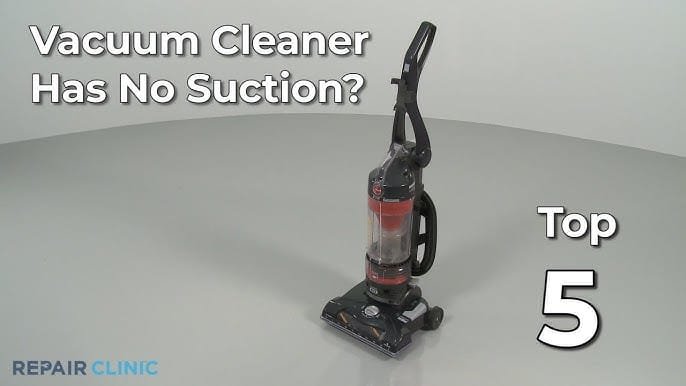Is your vacuum cleaner losing suction and leaving your floors less than spotless? You’re not alone—and the good news is, you don’t have to rush out to buy a new one.
Fixing weak suction is easier than you think, and with a few simple steps, you can bring your vacuum back to life. You’ll discover quick and effective ways to restore powerful suction, save money, and get your home cleaner than ever.
Keep reading, because your vacuum’s best performance is just around the corner.

Credit: www.ecovacs.com
Common Causes Of Poor Suction
Poor suction is a common problem with vacuum cleaners. It stops the machine from picking up dirt well. Many factors cause weak suction. Knowing these helps fix the issue fast. Check each part carefully to find the problem.
Clogged Filters And Bags
Filters catch dust and dirt. Over time, they get full and block airflow. Bags fill up and stop dirt from entering. This lowers suction power. Clean or replace filters often. Empty or change bags when full. This keeps air moving freely.
Blocked Hose Or Nozzle
Dirt can block the hose or nozzle. Large debris or hair clogs the path. Air cannot pass through easily. This reduces suction force. Remove the hose and look inside. Clear any blockages with a long stick or brush. Check the nozzle for stuck dirt as well.
Worn Out Brush Roll
The brush roll helps lift dirt from floors. Over time, brushes wear down or get tangled. This stops them from working well. A slow brush means less dirt picked up. Clean hair and threads from the brush. Replace it if bristles look worn out.
Vacuum Motor Issues
The motor creates suction power. If it runs weak or stops, suction drops. Motors can burn out or have wiring problems. Listen for strange sounds or no sound at all. Call a technician for motor repairs. Avoid using the vacuum until fixed to prevent damage.

Credit: money.com
Step-by-step Suction Fixes
Fixing vacuum cleaner suction is easier than you think. Follow these simple steps to bring back strong suction power. Each step targets common causes of weak suction. Check each part carefully for problems. This guide helps maintain your vacuum for better cleaning every time.
Cleaning Or Replacing Filters
Dirty filters block airflow and reduce suction. Remove the filter from the vacuum. Wash it with water if it is washable. Let it dry completely before putting it back. Replace the filter if it looks worn or torn. Clean filters improve air circulation and suction strength.
Clearing Hose And Nozzle Blockages
Objects stuck inside the hose or nozzle stop air flow. Detach the hose from the vacuum. Shine a flashlight inside to spot clogs. Use a long, flexible brush or stick to push out debris. Check the nozzle for hair or dust build-up. Clear blockages to restore proper suction.
Inspecting And Maintaining Brush Roll
The brush roll picks up dirt from floors. Hair and threads can wrap around it and slow it down. Turn off the vacuum and flip it over. Cut away tangled hair and clean the brush with a cloth. Spin the brush to ensure it moves freely. A clean brush roll helps suction stay strong.
Checking And Repairing Motor Components
The motor creates suction power. Listen for unusual noises or weak performance. Unplug the vacuum and open the motor cover carefully. Look for dirt, dust, or loose wires. Clean the motor area gently with a soft brush. Tighten any loose parts or screws. Seek professional help if the motor still fails.
Preventive Maintenance Tips
Vacuum cleaner suction problems often result from poor maintenance. Small habits help keep your vacuum running strong. These tips focus on simple steps to prevent suction loss. Follow them to save time and avoid costly repairs.
Regular Filter Cleaning Schedule
Filters catch dirt and dust. They get clogged fast. Clean filters every two weeks or as the manual says. Washable filters need drying before reuse. Replace filters if damaged or very dirty. Clean filters help air flow and suction power.
Proper Hose Handling
Hoses carry dirt to the vacuum. Bent or crushed hoses block airflow. Avoid sharp bends or heavy pressure on hoses. Check hoses for holes or clogs often. Clear blockages with a straightened wire or air blower.
Routine Brush Roll Checks
The brush roll picks up dirt from floors. Hair and threads wrap around it. Remove these tangles regularly. Make sure the brush spins freely. Replace worn brush rolls to keep suction strong.
Storage Best Practices
Store your vacuum in a dry place. Avoid damp areas that cause mold and rust. Coil cords loosely to prevent damage. Keep hoses and attachments together to avoid losing parts. Proper storage extends vacuum life and maintains suction.
When To Seek Professional Help
Knowing when to seek professional help is key to fixing vacuum cleaner suction issues. Some problems need expert tools and skills. Trying to fix these can cause more damage. Recognize signs that show it’s time to call a technician. This saves time, money, and stress.
Signs Of Motor Failure
Listen for strange noises from the motor. A burning smell is a serious warning. The vacuum may stop working suddenly or lose strong suction. These signs often mean the motor has a problem. A professional can diagnose and fix motor issues safely.
Complex Internal Repairs
Broken belts, damaged fans, or clogged internal parts need special tools. Opening the vacuum can be tricky without experience. Complex repairs require knowledge of the vacuum’s design. Professionals have the right tools and parts to fix these problems. Avoid trying to fix inside parts alone.
Warranty And Service Options
Check if your vacuum is still under warranty. Repairs done by unauthorized people can void the warranty. Authorized service centers offer repairs covered by the warranty. They use original parts and follow manufacturer instructions. Using professional service protects your vacuum’s future.

Credit: www.youtube.com
Frequently Asked Questions
Why Is My Vacuum Cleaner Suction Weak?
Weak suction often results from clogged filters or a full dust bag. Check and clean filters regularly. Also, empty the dust container to maintain strong suction. Inspect the hose for blockages that can reduce airflow and suction power.
How Do I Clean Vacuum Cleaner Filters Properly?
Remove the filters according to the manual. Rinse washable filters with lukewarm water only. Let them dry completely before reinstalling. For non-washable filters, replace them as recommended to keep suction efficient and prevent motor strain.
Can A Blocked Vacuum Hose Reduce Suction Power?
Yes, blockages in the hose restrict airflow, causing weak suction. Detach the hose and inspect it carefully. Use a broomstick or compressed air to clear any debris. Regular checks prevent suction loss and maintain vacuum performance.
How Often Should I Replace Vacuum Bags Or Canisters?
Replace vacuum bags or empty canisters when they are about two-thirds full. Overfilled bags reduce suction and may damage the vacuum. Regular replacement ensures optimal airflow and efficient cleaning results every time.
Conclusion
Fixing vacuum cleaner suction is easier than it seems. Check for blockages and clean filters often. Replace bags or empty dust containers regularly. Inspect the hose and brush for clogs or damage. These simple steps help your vacuum work better.
Keep your vacuum maintained to save money and time. Clean floors faster and more efficiently with good suction. A little care goes a long way. Start today and enjoy a cleaner home.





